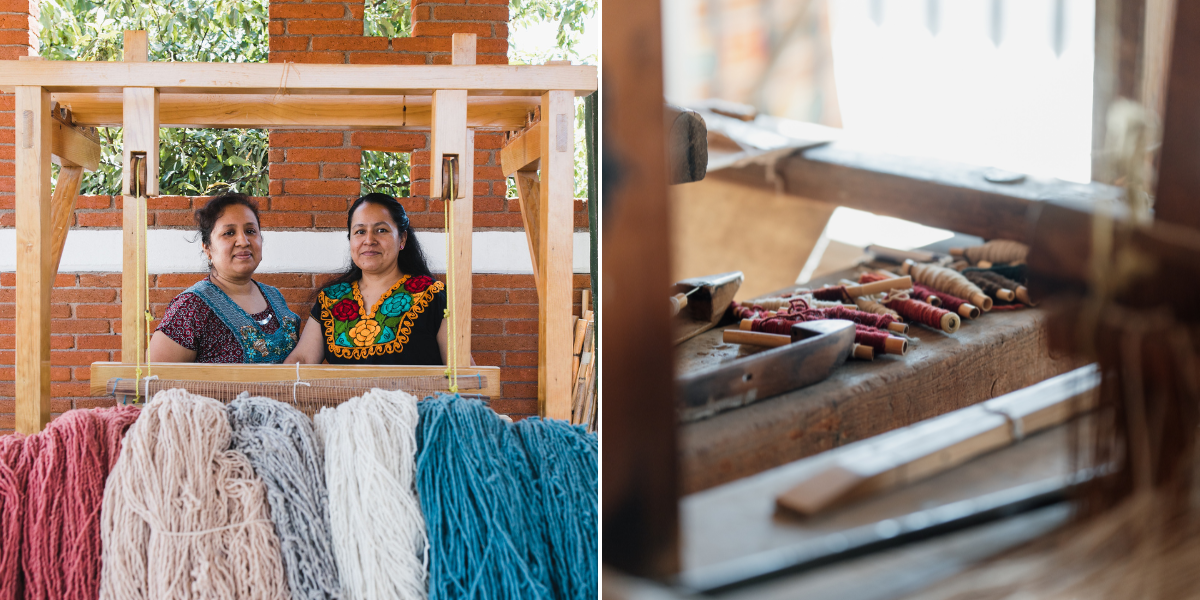Weaving Tradition into Every Thread: The Artisans of Oaxaca

At T.Skies Jewelry, we celebrate artisans from all corners of the globe. Our passion for craftsmanship goes beyond borders, embracing a diverse array of skills, stories, and cultural traditions. From the bold desert landscapes of the American Southwest to the vibrant textiles of Oaxaca, Mexico, we believe in preserving and sharing the artistry of communities whose work embodies history, beauty, and a deep connection to the earth.
In this spirit, we are excited to introduce you to a group of artisans from Oaxaca, Mexico. These talented weavers not only create stunning works of art but also infuse each piece with storied symbols, honoring a centuries-old legacy.
The Legacy of the Zapotec Civilization
The Zapotec civilization, which has thrived in the Oaxaca region of southern Mexico for thousands of years, is renowned for its profound contributions to art, architecture, and culture. The designs found in their textiles and artwork go beyond decoration; they form a visual language rich with symbolism that embodies the Zapotec worldview and deep connection to nature. For the Zapotecs, weaving is a sacred practice—a way to honor their ancestors, communicate with the divine, and preserve their cultural legacy. Each symbol woven into their textiles carries distinct meanings, often rooted in their stories, agricultural traditions, or spiritual beliefs. Through these designs, the Zapotecs tell stories that connect their past, present, and future, ensuring that their heritage endures across generations.

Meet the Artisans
In the village of Teotitlán del Valle, near Oaxaca, a group of talented artisans carries on the Zapotec tradition of weaving. These artisans create intricate rugs, which are transformed into beautiful, one-of-a-kind bags that are treasured by customers around the world.
One such artisan is Maria Luisa, a master weaver who comes from a family of four generations of weavers. She learned the art from her parents and has dedicated over 40 years to perfecting her craft. Her favorite aspect of the process is the delicate interplay of colors, creating purses that are a harmonious blend of traditional patterns and modern elegance. As Maria Luisa says, "You weave practically your life into it. Each piece is just that, a stage ... a piece of your life."

The Process of Turning Rugs into Bags
1. Designing: The artisans are skilled designers, drawing inspiration from their rich cultural heritage, daily lives, and the natural world around them. Together with a Design Manager, they collaborate to create seasonal designs, blending traditional Zapotec symbols with contemporary and abstract patterns. After reviewing color palettes and patterns, a sample is produced, and through a process of feedback and refinement, the most exquisite designs are selected to become handbags.

2. Dyeing: The wool used by these artisans arrives in its natural shades of white, cream, gray, and brown. Some pieces retain these colors, but many are transformed through vibrant dyeing processes. While some families continue to use traditional natural dyes from plants, insects, and minerals, others opt for more modern aniline dyes to achieve vivid colors. The process involves boiling the wool with the dye and a fixative, followed by drying the yarn in the sun. Sustainability is at the heart of this process. After the yarn is dyed, the water can be reused for multiple batches. Even the ashes from the fire used to boil the water are repurposed to adjust the pH levels in the water, which is then used to nourish the artisans' gardens.

3. Weaving: The weaving process begins on bi-peddle treadle looms, where the artisans meticulously prepare the cotton warp threads for weaving. The woolen weft is then passed over and under the warp threads, using a wooden shuttle to bring the design to life. The resulting woven pieces, called "tapetes," or woolen tapestries, are traditionally used as rugs but are repurposed to create stunning bags. In a nod to sustainable practices, leftover yarns are never wasted. Instead, they are reused in future projects, sometimes re-dyed to fit the specific colorways of new designs.

4. Sewing & Leatherwork: After weaving, the tapetes are sewn into the shape of the final bag. The bags are then sent to a local leatherworker who adds finishing touches such as leather handles, bases, and fringe. Once this is complete, the bags are returned to the weavers, who attach zippers and linings, ensuring that every detail is perfect before the bags are ready to be shipped. Even the leather scraps are repurposed for tags, fringes, and other small components, ensuring that nothing goes to waste in the crafting of these unique pieces.

The artisans of Teotitlán del Valle carry on the traditions of their ancestors, weaving not just wool but the essence of their culture into every piece. At T.Skies, we are honored to share their work and stories with the world. Through their hands, the legacy of the Zapotec civilization lives on, offering timeless beauty and profound meaning in every thread.









